.
Garden Diary - April 2021
If you have any comments, observations, or questions about what you read here, remember you can always Contact Me
All content included on this site such as text, graphics and images is protected by U.S and international copyright law.
The compilation of all content on this site is the exclusive property of the site copyright holder.
April
Tulips at the New York Botanical Garden
Wednesday, 28 April 2021
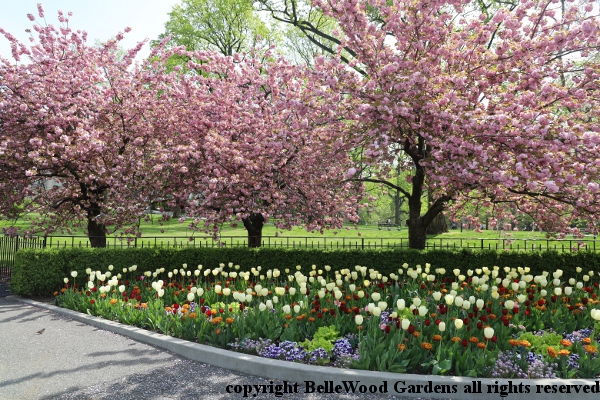
The planting beds on either side of the entrance booths (where tickets must be presented.)
Obviously the double pink late flowering Kwanzan cherries are a permanent feature here.
They are fronted with seasonal plantings. At the moment there's a tapestry of mixed tulips:

tall white ones, mid-height red ones, and glowing orange gold, low growing, double tulips
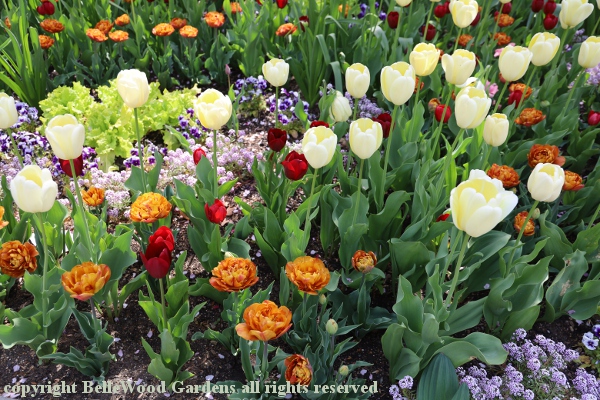
embellished with pansies, sweet alyssum, and some very charming frilly pale green lettuce.
Underplanting the tulips with annual spring flowers and the lettuce, really sets the tulips off.
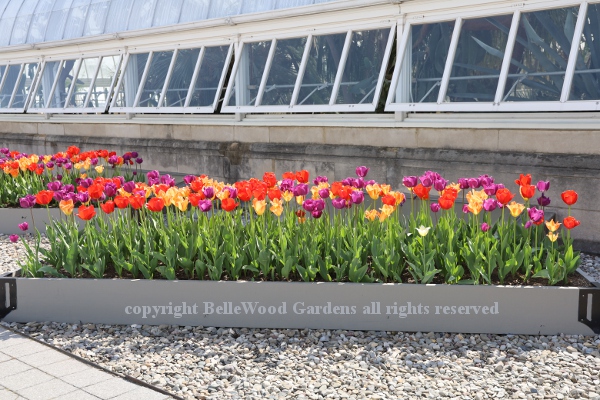
Planters arranged on both sides of the hardy water lily courtyard filled with a tapestry of tulips.
They make an amusing play on Yayoi Kusama's oversize, exuberantly colored and patterned
sculptured flowers: "Hymn of Life - Tulips" that stand reflected in the dark water of the pool.
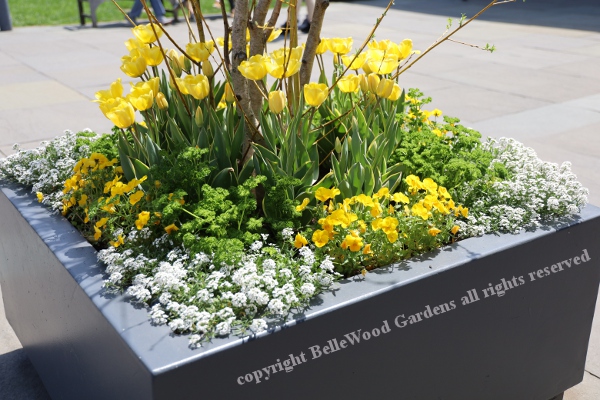
Excellent combination of yellow tulips with white edged leaves, underplanted with
yellow pansies, white sweet alyssum, and frilly parsley, all clustered under a birch.

Let me now take you, dear reader, on a detour into the past. When asked where tulips come from, most people will promptly respond, "Holland!" Yes, the Netherlands cultivate, propagate, hybridize tulips (and many other bulbs too.) But where did tulips originate?

image courtesy of Tulips in the Wild all rights reserved
Growing wild in the valleys of the Tian Shan and Pamir Alai mountain ranges of central Asia, tulips were cultivated in Constantinople as early as 1055. Within a few centuries they became among the most prized flowers. Today, it is the national flower of Turkey and Afghanistan.
Ogier Ghiselin de Busbecq, ambassador of the Austrian Hapsburgs to the court of Suleyman the Magnificent was one of the first Europeans to send this symbol of the Ottomans to Europe.

image courtesy of Netherlands Flowerbulb Information Center all rights reserved
Late in the 16th century he sent some to his friend Carolus Cluisius, in Vienna. When Clusius became director of the Hortus Botanicus at the Leyden Botanic Garden in the Netherlands, his tulips came with him.
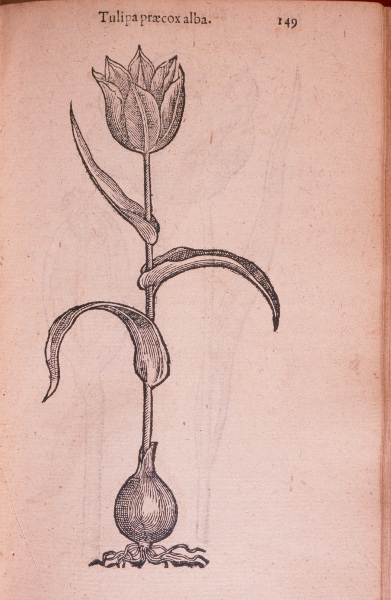
Woodcut illustration of early white tulip from Clusius' Rariorum plantarum historia of 1601
image courtesy of the LuEsther T. Mertz Library of the New York Botanical Garden all rights reserved
Now to return to the wonderful array and diversity of tulips
I am enjoying today at the New York Botanical Garden.
Tulips are primarily classed by their shape and sometimes by flowering time.
E.g., lily flowered tulips are single flowered cultivars with pointed, reflexed petals
bloom midseason or late. Here are a few cultivars to be seen at NYBG, this year.

Lily flowered tulip 'Ballerina' dances above 16 to 20 inch tall stems. Flowers are
deep red edged yellow-orange, marigold-orange inside with a buttercup heart.
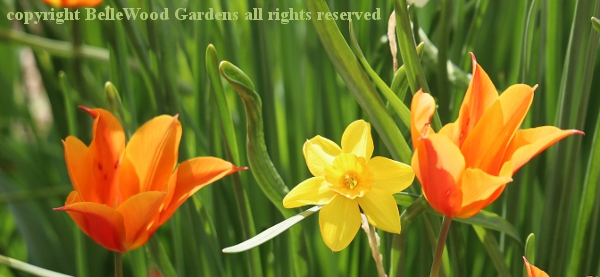
Here 'Ballerina' is paired with a cultivar of fragrant, yellow flowered Narcissus jonquilla.

Lily flowered tulip 'Budlight' has pale lemon yellow flowers edged with white on
sturdy stems. Yellow pansies with black markings provide an elegant pairing.


Just stunning! Lily flowered tulip 'Sonnet' is truly something to write poems
about. Opening with purplish-red, call it merlot, petals edged bright yellow,
they then mature to deep raspberry with peach edges. Sounds just delicious.

Parrot tulips are so named for a fancied resemblance to a bird's feathers:
single flowered, the petals are laciniate, twisted, curled. Mostly late flowering.
This is the type of tulip often seen in paintings of the 17th century Golden Age.

Very popular ever since its introduction in 1937, 'Black Parrot' has very dark
burgundy petals with close to black feathering and edges. Lush and elegant.

Single late tulips now include what used to be called the Darwin Group
(but not the Darwin hybrids) and the Cottage Group. Good cut flower but
remember that all tulips continue to grow - their stems lengthen in a vase.

'Paul Scherer' is among the very darkest but color is not used to classify tulips.
Although, viridiflora tulips are those with green leaf tissue in their petals.

'Spring Green' has leaf green markings on ivory white petals. Its elegance is
recognized by the Award of Garden Merit by the Royal Horticultural Society.

But it can be confusing. 'Green Wave' is classified as a parrot tulip, priority
given to the feathery edged ruffled petal shape rather than the green blotch.

At least here there are no decisions to be made. Tulipa accuminata is a species.
Tulips will soon be over, these bulbs dug and replaced with annuals. Should you
want to see a wonderful array, compare and contrast, return when the peony walk

is in beautiful bloom in mid-May. Its enough to encourage you into becoming a painter.

Peony border painted by American Impressionist Matilda Browne ca. 1907
Back to Top
Back to April
Back to the main Diary Page






















